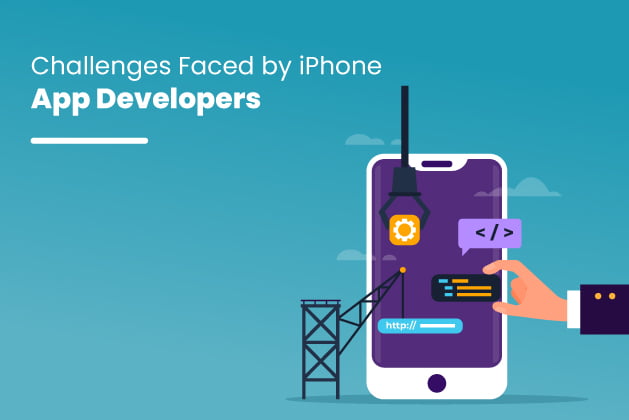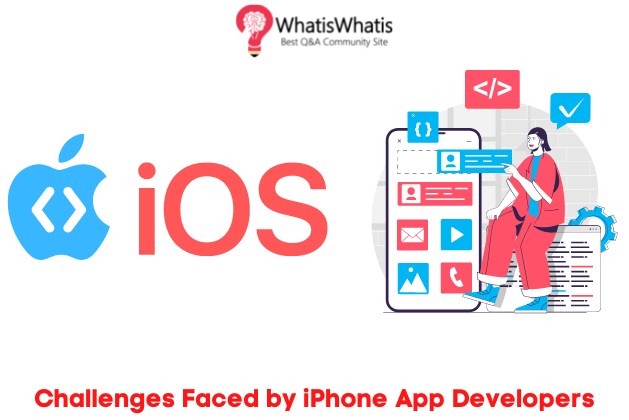The world has changed a lot in the last few years.
We are now living in an era of globalization and technological advancement, which has led us to have more access to information than ever before.
The internet has become a place where people can go to get their answers, learn new things, and communicate effortlessly.
After a decade of constant innovation and change in how we use our devices, one thing hasn’t changed: the number of apps available for download on the App Store has grown exponentially year over year—and it’s only going to get bigger again soon.
Read more: Android Vs. iOS: Which to Choose for Your Mobile App Development?
It is why there are millions of apps available today that can help you manage your life better than ever before!
It has not only boosted the morale of the business owners to get an iOS for their service but has increased the number of iOS development companies too.
But is iOS mobile app development a piece of the cake?
No!
This article will highlight the top ten challenges faced by iOS app developers in 2022.
What Are The Top 10 Challenges Faced by iOS App Developers in 2022?

1. App Security
When it comes to security, developers have a lot of work ahead of them.
Security is one of the most important aspects of any app, and it’s crucial for any ios mobile application development company or business owner that wants their apps to be successful.
In this section, we’ll take a look at some common security issues faced by iPhone app developers in 2022, as well as some ways you can avoid them yourself.
One example of an issue that often happens among iPhone app developers is cross-site request forgery (CSRF).
CSRF attacks occur when attackers use known vulnerabilities in websites or web applications to gain unauthorized access to another person’s account without authorization from them.
This type of attack was first discovered in 2005 when researchers found that hackers could access user data via JavaScript code embedded within pages hosted on Facebook and other websites.
2. Poor Battery Life
A common problem with iPhone apps is battery drain. If you’re experiencing this issue, it’s important to know that there are some things you can do to fix it.
First and foremost, try turning off all background applications and data when not in use.
If this doesn’t solve the problem for you, then consider using a different device or using a more powerful charger for your phone so that it won’t be drained as quickly by other programs on your phone (like Spotify).
If none of these solutions work for you—or if they don’t seem like good options at all—then try contacting Apple Support about getting an official solution from them directly instead of trying something yourself.
Know more: How do smartphones calculate battery percentage?
Nothing is worse than having an app bug get worse over time which would lead to even more problems down the road!
3. Battery and Performance Optimization
Battery optimization is a key feature for any iOS app. It can make the difference between a good experience and an excellent one, depending on how you use your device.
That’s why it’s important to optimize battery life as well as performance and speed.
The problem with optimizing battery life is that it isn’t just about saving power; it also affects how well apps perform overall, which affects user satisfaction.
In fact, there are many factors that affect performance, such as memory usage, network connectivity and CPU speeds (and more).
To get optimal results from optimization efforts, you need to test on real devices under different hardware configurations to know what works best for each type of device used by potential app users!
4. Future-proofing of the App
Future-proofing your app is a key strategy for any entrepreneur.
The rapid rate of change in technology means that you will need to develop your product with the future in mind, and it’s important that you do so correctly.
It is all about ensuring your app can be used without any changes being required.
This means ensuring that the design looks good on all devices but also making sure that there are no compatibility issues when using different operating systems or browsers across different platforms.
5. Getting the iOS App Store Approval
The App Store is a place where you can find and download apps for your iPhone, iPad or iPod Touch. It’s also where you can submit an app for approval if it meets Apple’s requirements.
App stores have their own set of rules that must be followed in order to get the green light from Apple—and these rules are ever-changing as new features are added to each version of iOS (the operating system).
If you’re making an app but don’t know whether or not it will be approved by Apple, there are some things that might help:
- Make sure your app follows all guidelines set forth by Apple; this includes having no viruses or malware within it.
- Test drive potential customers before submitting anything into production so that any problems can be fixed before going live on the App Store!
6. Simulating Low-speed Network Connectivity
Simulating low-speed network connectivity is one of the most important things to do when developing an app. It’s not only important for testing but also for development.
For example, if you want to test your app on a slow connection (which could be due to a poor signal), then you need to simulate low-speed network connectivity in order to get an accurate result.
This can be done by using a proxy server that acts as an intermediary between the actual device and its network card driver.
The proxy server allows us access through our own desktop computer rather than using another device altogether – this way, we’ll have access to all information required without having any delays or loss of data because of slow connections!
7. Compatibility issues with different iOS versions
For most app developers of ios mobile application development companies, the challenge of compatibility with different iOS versions is one of the most frustrating aspects of developing an application.
The new iOS releases are released every year, and this means that you will have to test your apps on each new release before you can release them to the public.
If your app isn’t compatible with an older version, then there’s a chance that users might experience issues while using it as intended.
It’s also important not just because it can cause a loss in revenue but also because there might be some other issues like crashing or freezing, which could make users uninstall your app instead of continuing to use it until they find out what caused these problems themselves (which could take quite some time).
Also Read: What Are The Current Trends Of iOS App Development
8. Compatibility with Different iOS Devices
The iPhone is a great device for app development, but it’s not without its challenges.
The most obvious challenge is compatibility with different iOS devices.
For example, if you want to create an app that works on both the iPhone XS Max and an older model of the same phone (e.g., iPhone 8), you’ll need to test your app on both types of the device before publishing it in order to ensure that it runs smoothly across all platforms—and this can be time-consuming!
Another common issue developers face when making apps for iPhones is resolution issues.
Some iPhones have lower resolution screens than others do; some have higher resolutions than others do. Some have aspect ratios different from those found in other smartphones; the list goes on!
Because there are so many potential combinations here, developers often end up spending hours just trying out different combinations until they find something that works well enough.
This helps them to ensure that the user experience is not ruined when running their apps natively on iOS devices with varying specifications, such as pixel density settings being turned up high enough where the text becomes blurry due to the lack of pixels available per inch height measurement toolbars display properly.
9. Poor or No Beta Users Testing
The crucial step in building a successful app is to ensure that it is tested by users. This means you need to get feedback from beta testers who have already used your application and know what they think of it.
The importance of beta testing could not be overemphasized, as it will help you identify any bugs or issues with the product before release, which could otherwise cause huge issues for users if they weren’t caught early enough.
Find more: Security Testing: Getting It Right From The Beginning
To find these people, simply ask around at meetups or conferences where tech enthusiasts hang out and see who else might be interested in helping out with this process – after all, most developers of ios mobile application development companies are looking for someone else who can act as their “wireless assistant” during development (the person interacting directly with their device).
10. High Expectations of UX/UI
UX/UI is a critical part of the app. It’s what makes it so intuitive and easy to use, especially if you have a lot of users who already know how to use smartphones.
Also know: iOS Development- Layout considerations to make attractive app visual design
It stands for user experience and user interface, respectively. They’re both important parts of your app because they’re what keeps people coming back every day with their friends (or maybe just themselves).
If you don’t have an effective UX/UI strategy in place, then you’ll struggle with retention rates—and this will cost money!
Conclusion
So now that you know the challenges faced by iOS app developers, how can you overcome them?
The first step is to stop thinking of your app as a single piece of software and think about it as a whole ecosystem.
Your users expect an experience that feels natural and familiar from their phones and tablets, even if they don’t have the exact same device.
Most importantly, make sure that your app is built for constant upgrades.






Leave a comment